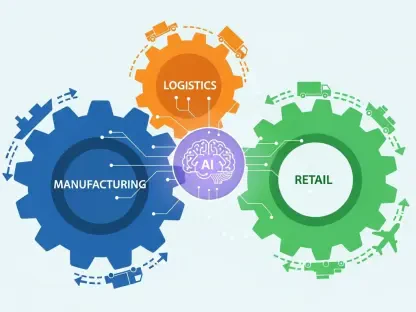The launch of the world’s first photonic AI processor by Q.ANT, integrated into the Leibniz Supercomputing Centre (LRZ), marks the beginning of a transformative era for data centers. Based in Europe, LRZ is one of the continent’s foremost data centers, and the introduction of this cutting-edge processor represents the first use of an analog photonic co-processor within a high-performance computing environment. This technological advancement holds the promise of transforming AI and simulation workloads by substantially elevating performance metrics while drastically reducing energy usage. As AI applications continue to grow, they increasingly strain current computing infrastructures with their intensive power consumption and resultant heat generation. The photonic AI processor introduced by Q.ANT functions on the principles of light rather than electricity, offering a revolutionary solution. By generating no heat and requiring minimal cooling, it vastly enhances energy efficiency and sets new standards for sustainable computational practices.
Photonic Advancements in High-Performance Computing
The pioneering photonic technologies embodied in Q.ANT’s NPS empower a new class of energy-efficient server racks that redefine industry standards. Their promise of up to 90 times lower power consumption per workload is complemented by a projected 100-fold increase in a data center’s capacity. These remarkable figures are particularly significant in a digital age characterized by increasing demand for computational power and storage. The processor’s x86 software compatibility ensures a level of integration with existing systems that facilitates seamless adoption. This compatibility allows organizations to embrace photonic technology without necessitating changes to their existing software frameworks or server configurations, thus promoting a smoother transition and reducing potential disruptions.
The collaboration with LRZ stands as a noteworthy milestone in this technological journey. It heralds the potential redefinition of data center architectures and illuminates pathways for photonic computing’s mainstream integration within next-generation computing infrastructures by the close of the decade. Backed by investment from the German Federal Ministry of Research, Technology and Space, this joint effort aims to expand upon hybrid digital-analog frameworks—a vision initially lofty but now within reach. As more industries recognize the potential of these innovations, it is clear that strategic partnerships and collaborations could accelerate advancements across sectors.
Evaluation and Future Prospects
The ongoing evaluation involves deploying several units of the latest generation of Q.ANT’s NPS, focusing on diverse benchmark workloads and real-world applications. The priority areas for these tests span impactful sectors such as AI inference, climate modeling, and medical imaging. Initial results from these applications are set to pave the way for future phases, which will explore successive generations of the NPS for further scrutiny and improvements. By focusing on establishing new benchmarks and use cases, like materials simulation for fusion research, these advancements have the potential to unlock new applications and redefine computing paradigms across multiple fields.
As the photonic AI processor continues to undergo rigorous testing and evaluation, its potential to redefine energy-efficient AI becomes increasingly apparent. The combination of analog precision powered by light presents a viable solution to the AI infrastructure scaling crisis. By tackling this challenge head-on, Q.ANT’s initiative represents a significant milestone in advancing energy-efficient AI technologies. The environmental implications are particularly promising, suggesting the possibility for a substantial reduction in the environmental footprint associated with computational processes worldwide.
Conclusion: A New Era for Computing
The introduction of the world’s first photonic AI processor by Q.ANT into the Leibniz Supercomputing Centre (LRZ) signals a groundbreaking shift for data centers globally. Situated in Europe, LRZ ranks among the continent’s premier data centers, and incorporating this advanced processor marks the initial use of an analog photonic co-processor in a high-performance computing setup. This leap in technology aims to reshape AI and simulation workloads by significantly boosting performance metrics while curtailing energy consumption. As AI applications broaden in scope, they place mounting demands on existing computing systems due to their high power consumption and heat production. The photonic AI processor, leveraging light instead of electricity, provides a novel solution by eliminating heat generation and requiring minimal cooling, thus optimizing energy efficiency. This innovation sets a new benchmark for sustainable computing practices, positioning it as a pivotal development for the future of high-performance computing environments.









